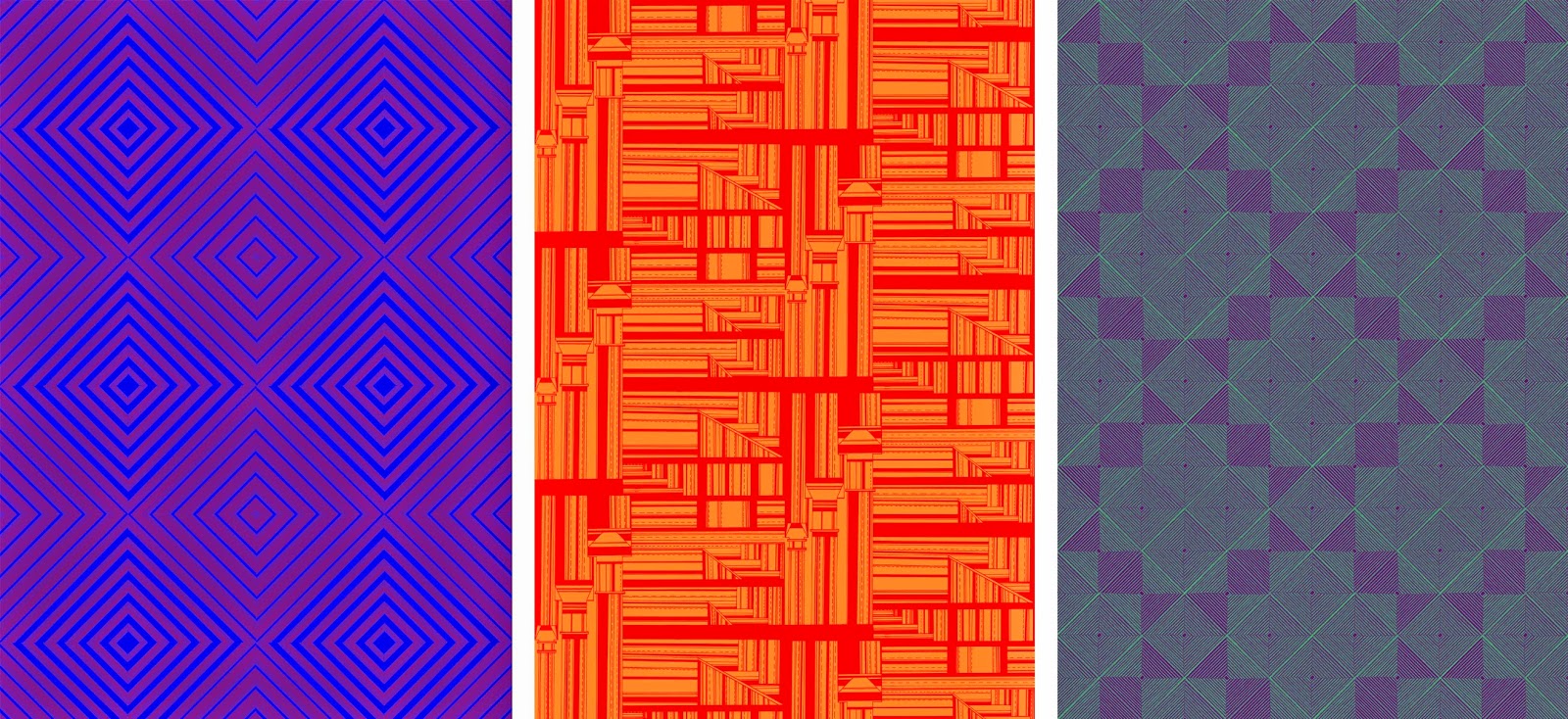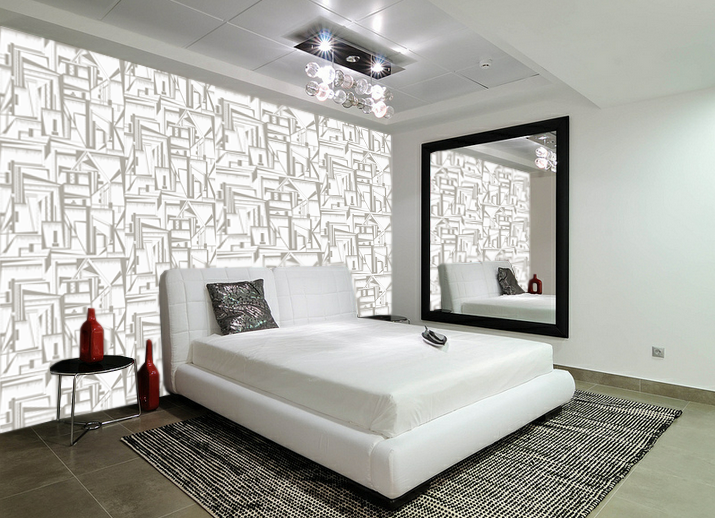This unit has really pushed me as a designer, with the allocated time for the completion being the smallest of the year so far yet the strive to want to create the most work. I threw myself into this project from the very beginning, usually I take a few weeks to fully get into a project. By addressing this unit as a loose continuation from my last project I knew where I wanted my prints to go and I was fully aware of the dedication that was needed to achieve this.
Researching into optical prints has transformed this collection, moving the prints away from the graphic style construction and concentrating on pattern form itself. Designers such as Cole + Sons and Bridget Riley have been a great source of ideas, showing how lines in black and white can create texture and surface pattern on prints. From this I began my design work, looking at brick patterns and knit constructions it allowed me to refine how I created initial drawings. With my attention to detail and knowing how I wanted a repeat to look this drawing element of the project took the most time. By hand drawing each design it allowed the end prints to have a strong structure but not be computerised in the outcome. Some of the drawings worked well on their own, however when put into repeat did not look how I would have hoped and I did not take them further. I have always wanted to create a hand drawn collection, and through drawing in this style I feel I have achieved this.
Moving my prints into colour has always been an obstacle to overcome through out my practice, knowing which colours will work in this style of print. By keeping my colour palet to primary and secondary it has allowed the prints to be focused on colour relationships. The change within a print from a simple colour change has both surprised and impressed me. Some of the colour pairings I have made in this unit have not been successful and have turned my prints into ugly patterns, however other pairings have created subtle and beautiful prints. I have spent a lot of time transforming most of my prints into colours, each one into a 24 colour way pallet. This has been very beneficial as colour pairings that work for one print have a completely different effect on another.
Along side the practical element of this unit I have had a strong questioning on where my work will fall after university, what kind of job I will be going to interviews for, where do I see myself as a post graduate. I collaborated with my graphic design friend to resolve some of these questions, by giving myself a brand and a logo I felt that my work would be more memorable. I have now a strong logo that works with my style of working and fits well within the final prints. Accompanying this we have created four different backed business cards to give to potential employers, being made square to add another edge to my work. To add to the final degree show we have made a hand out, folding down to a small pocket sized flyer. This showcases three of my designs and gives a sense of my style and working to people.


















































